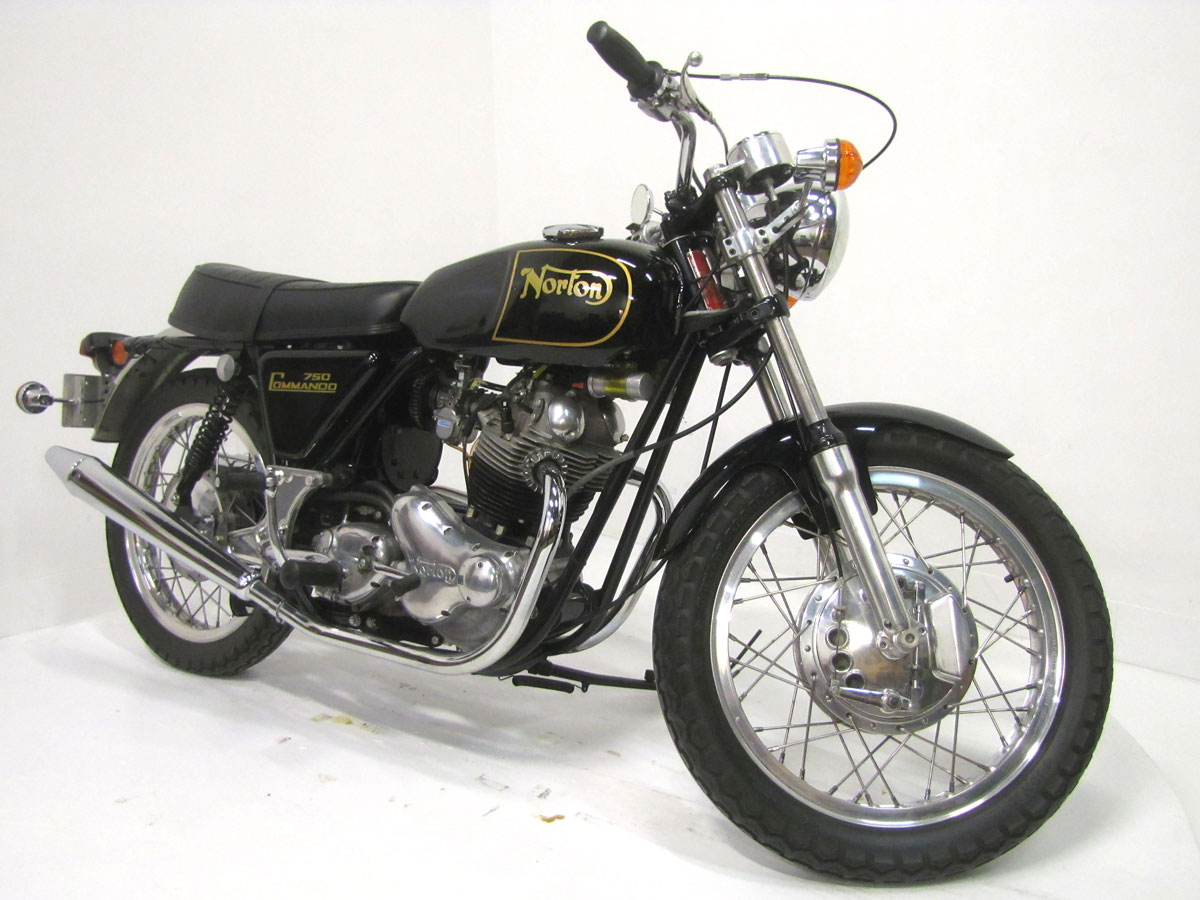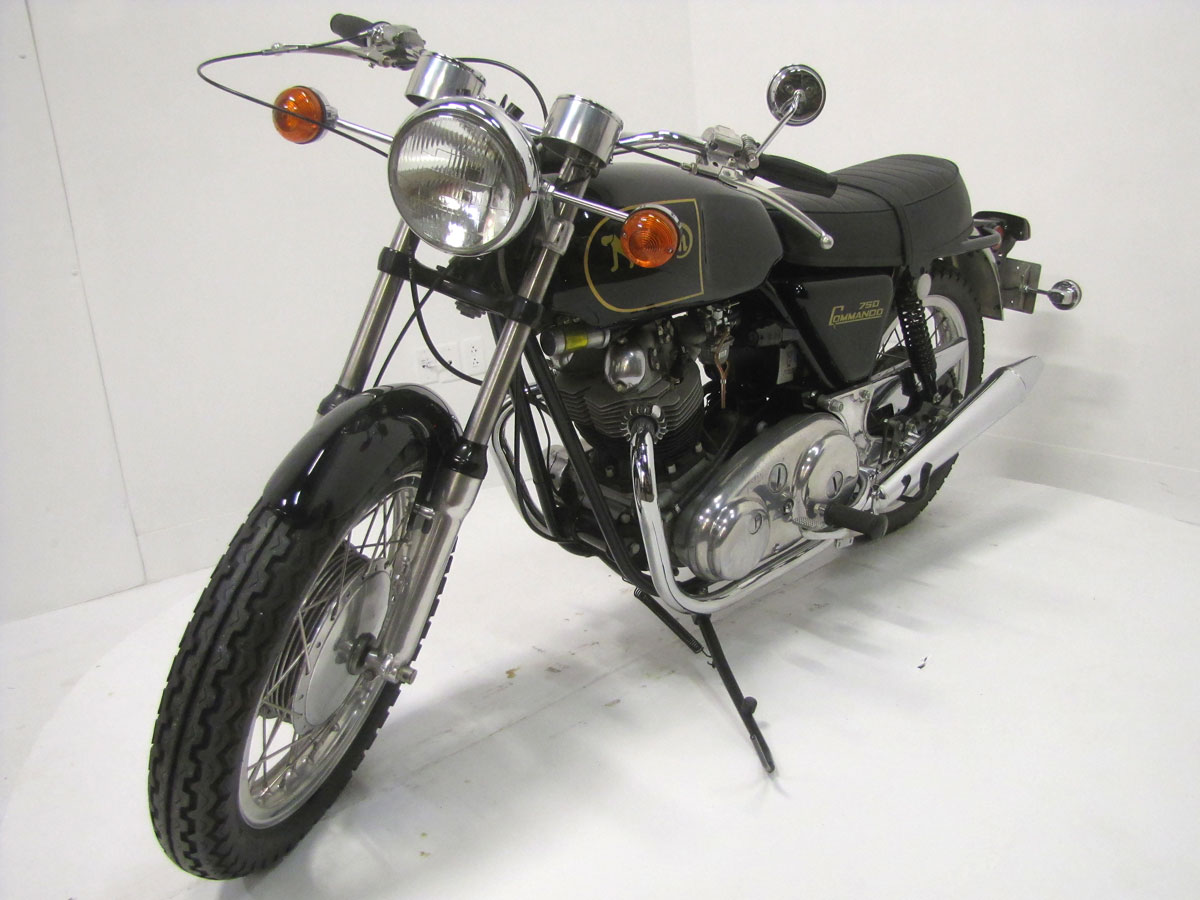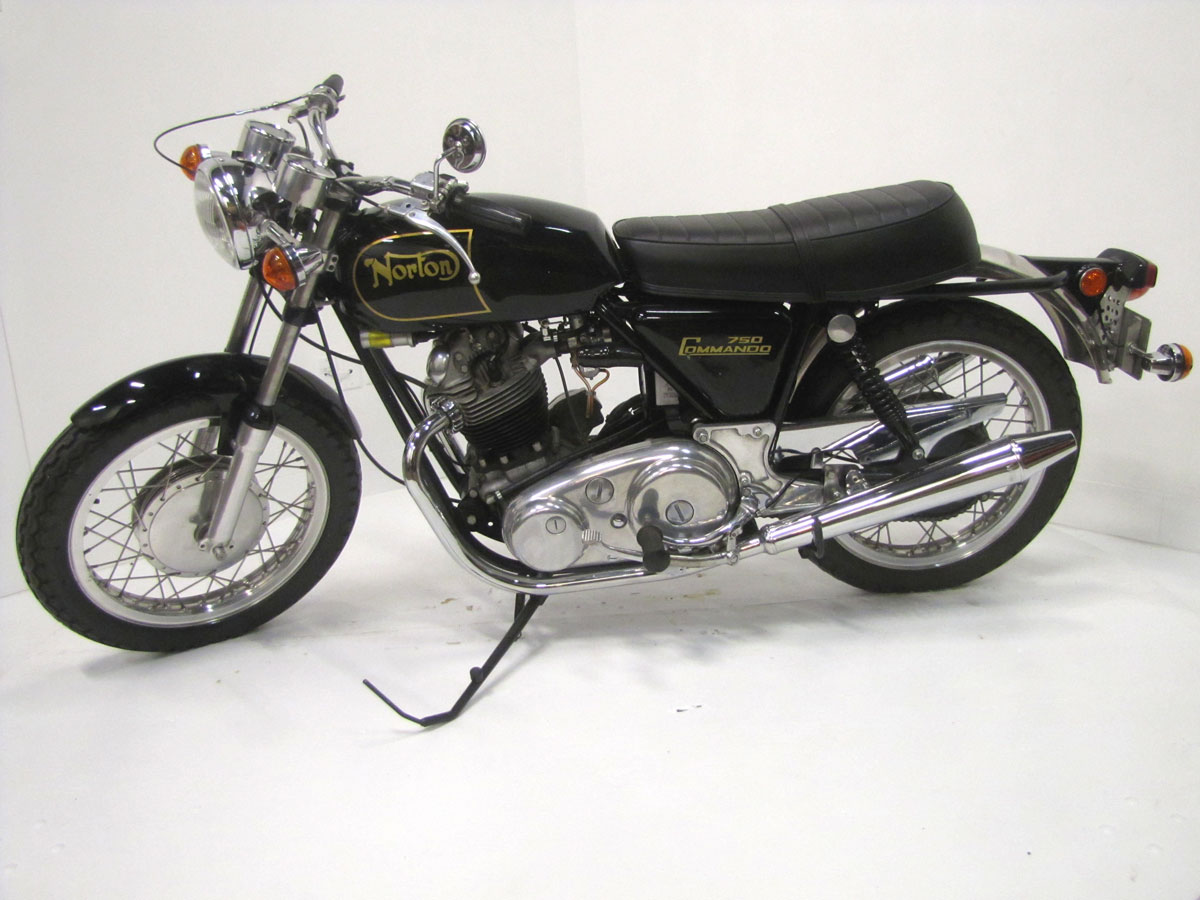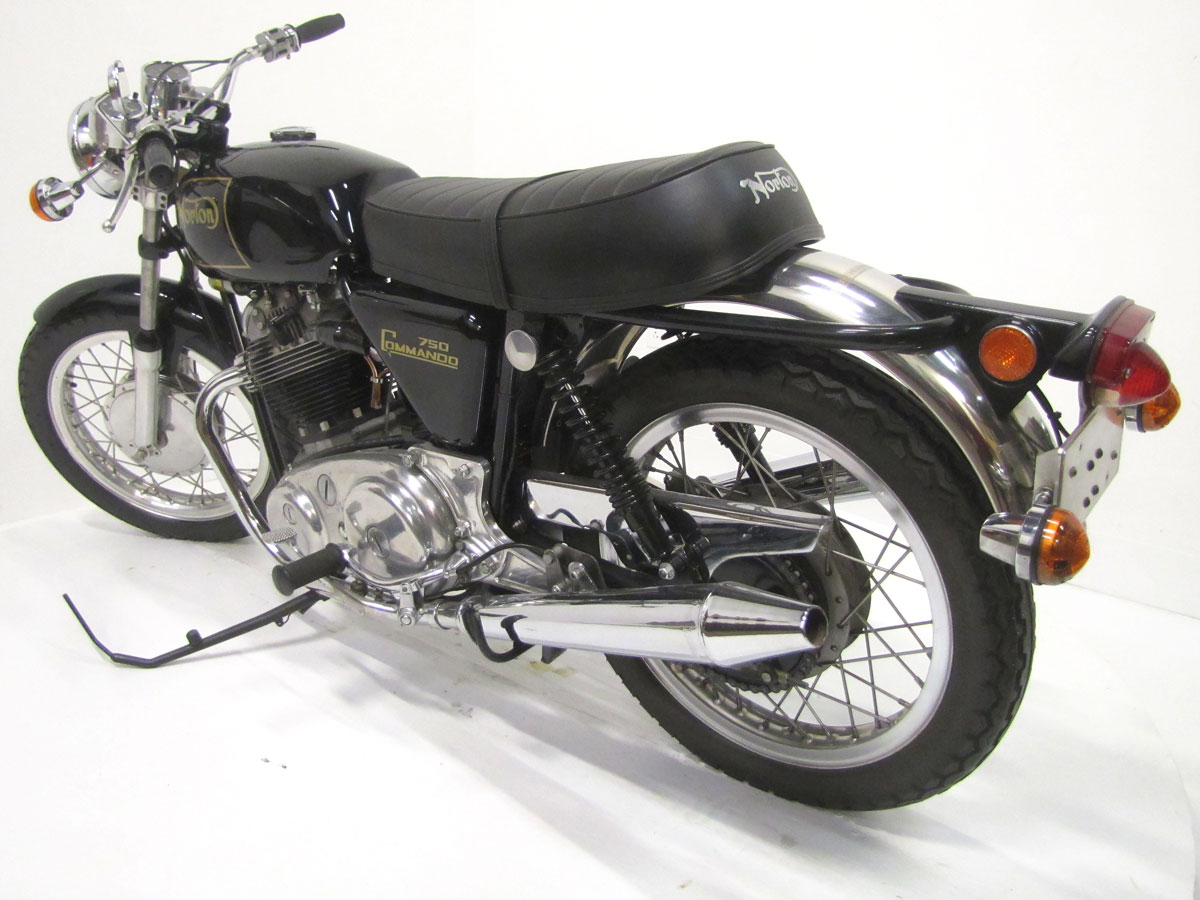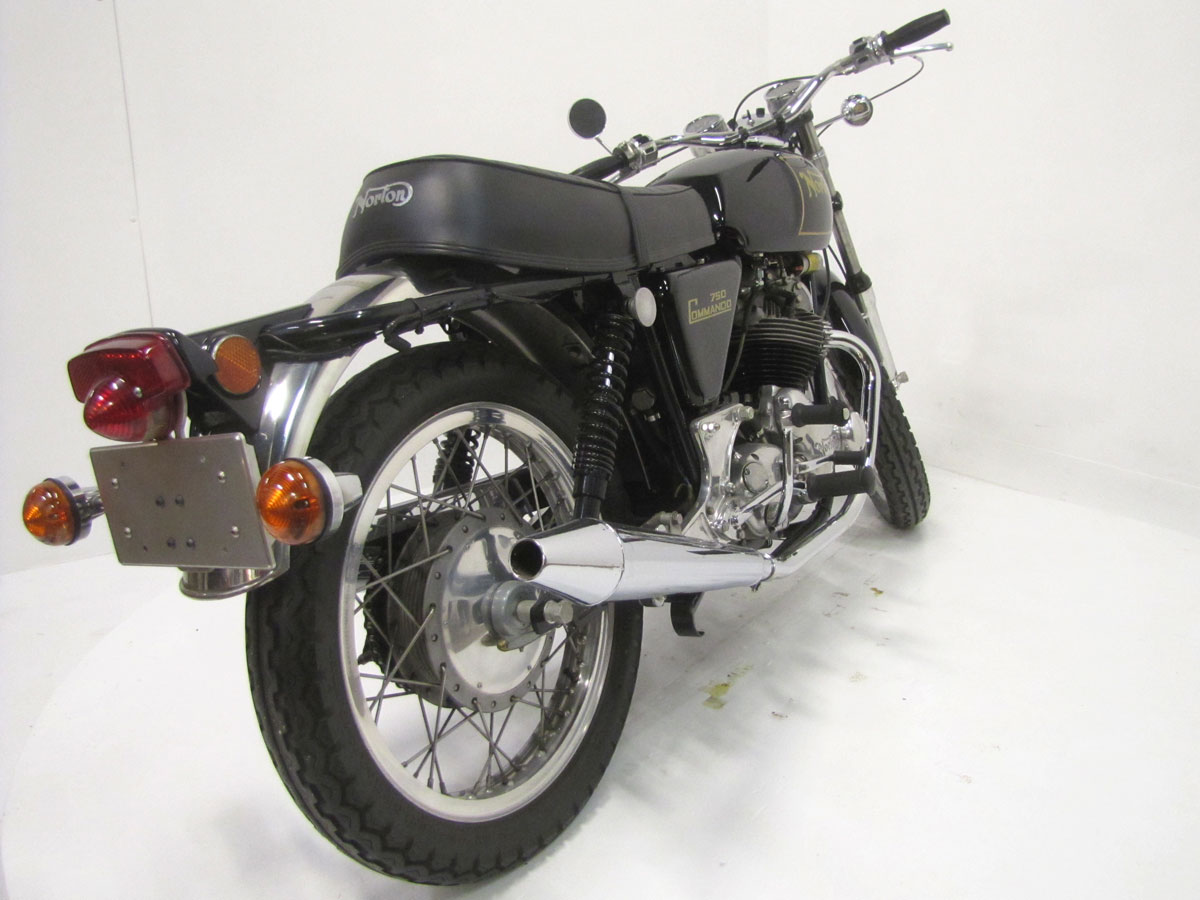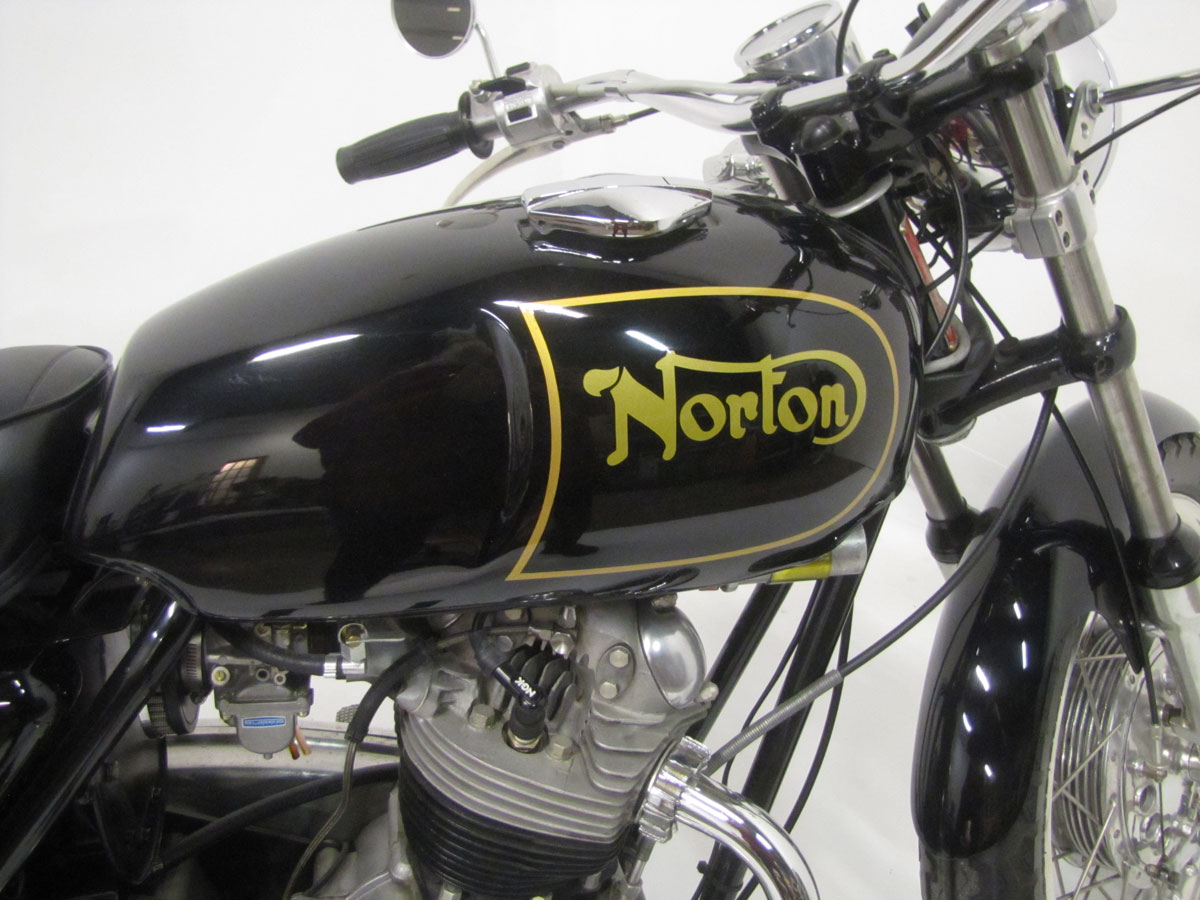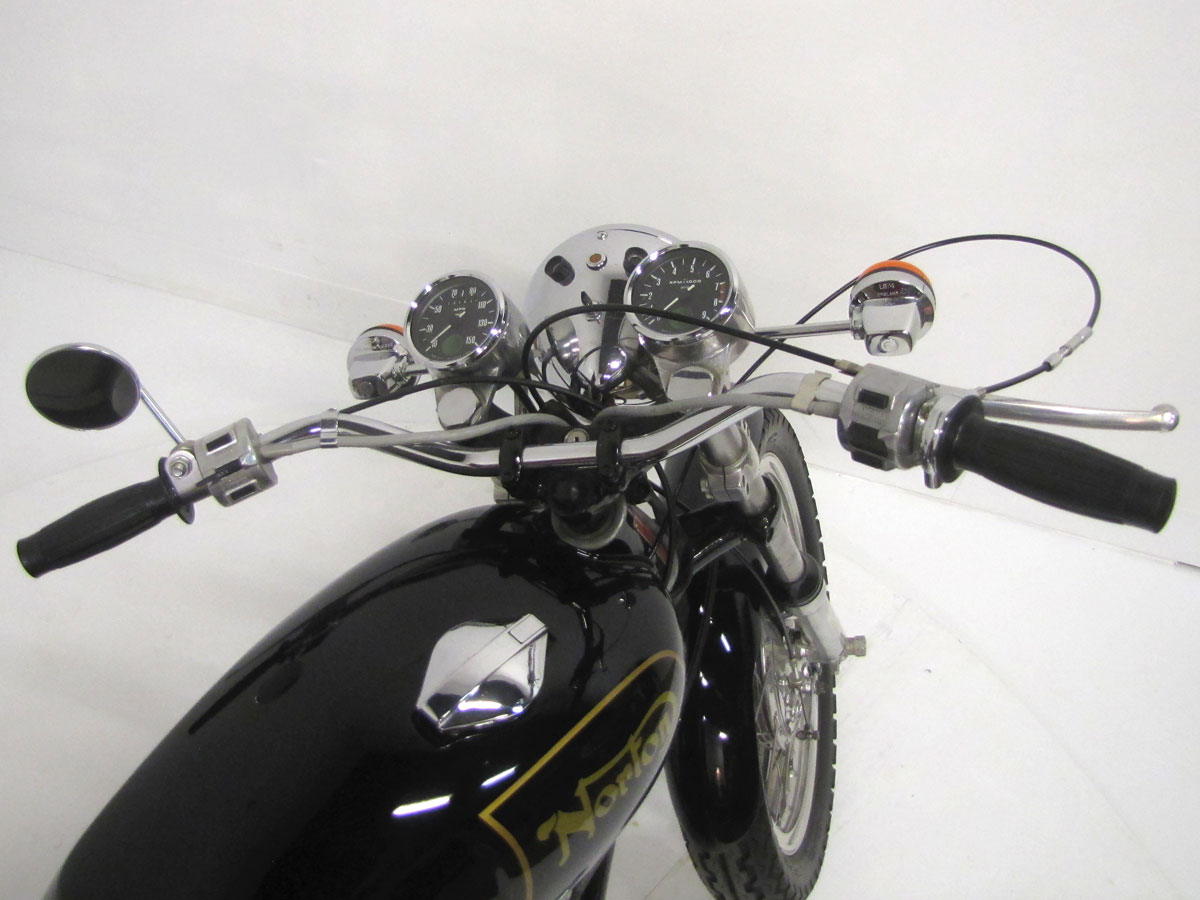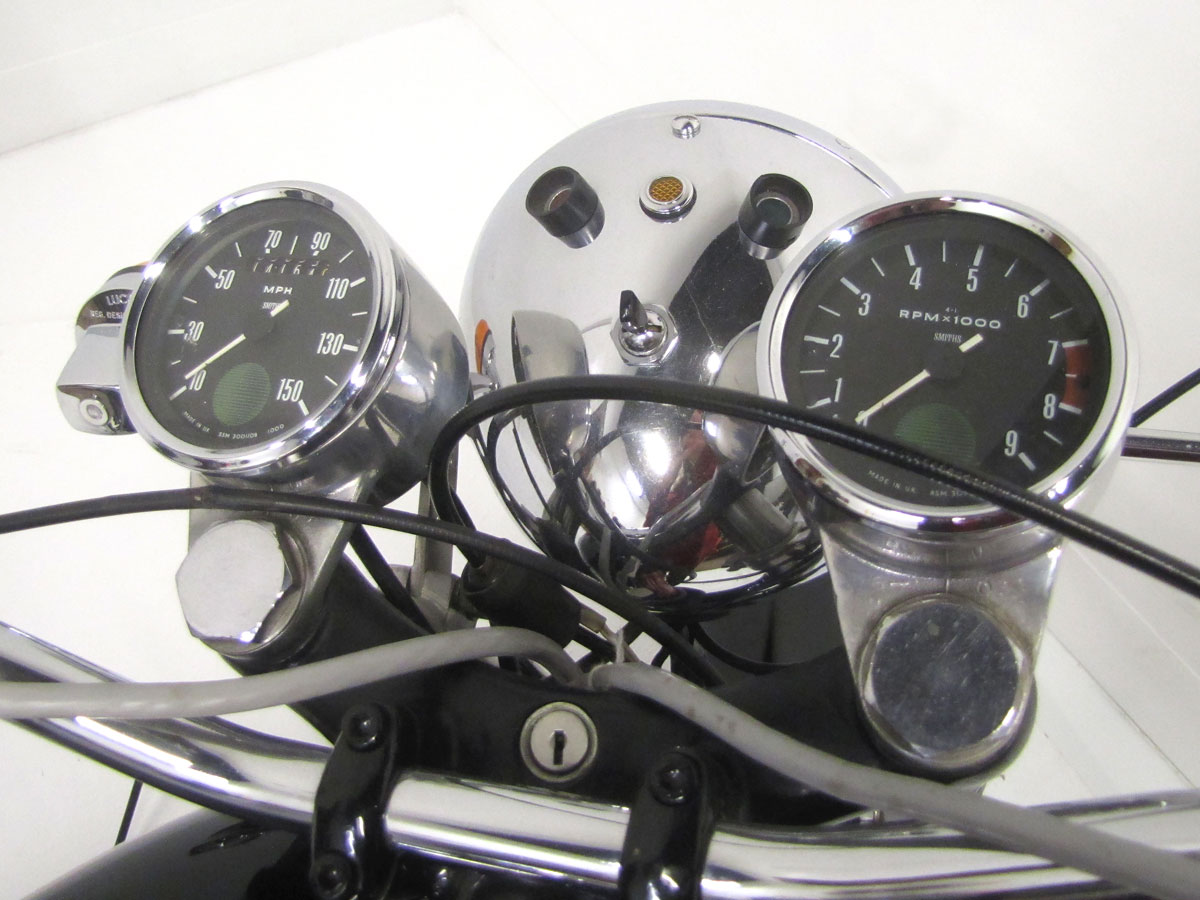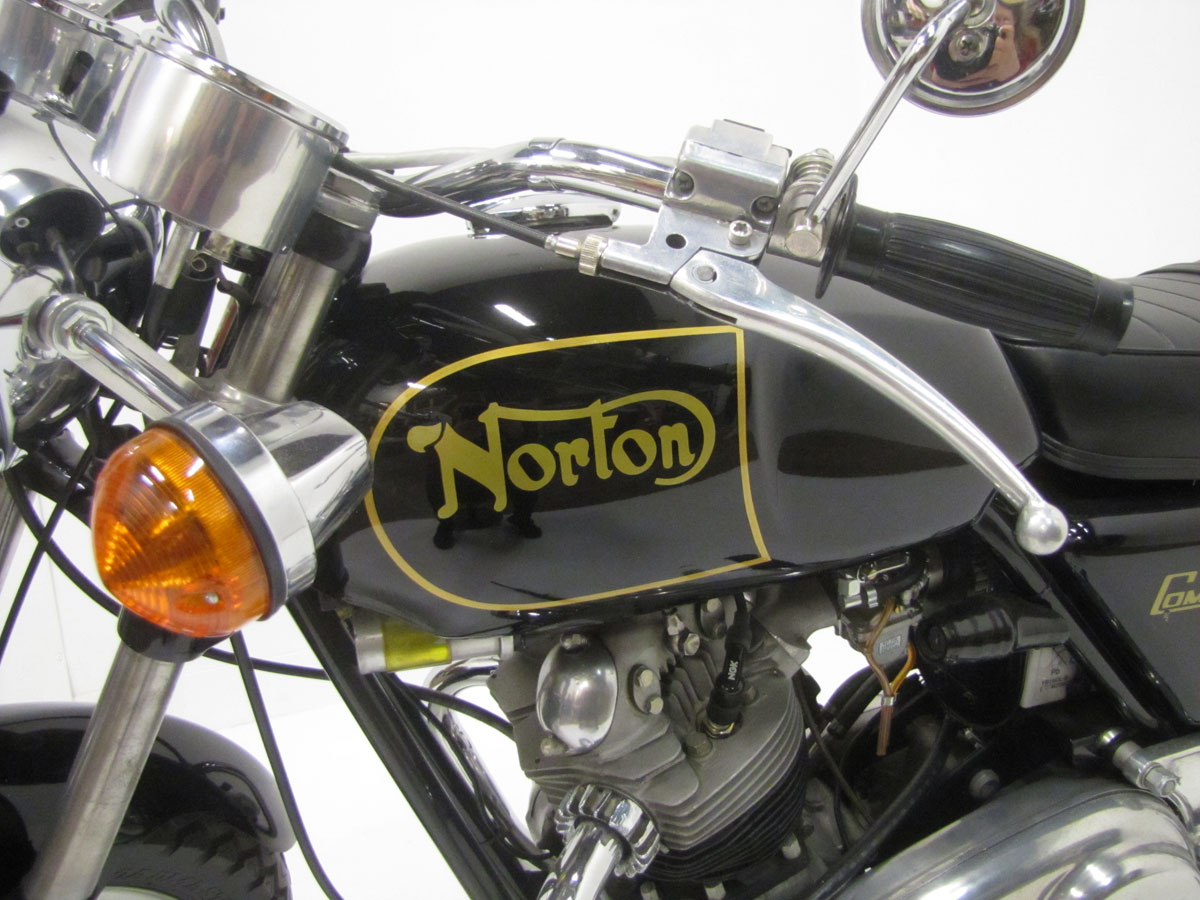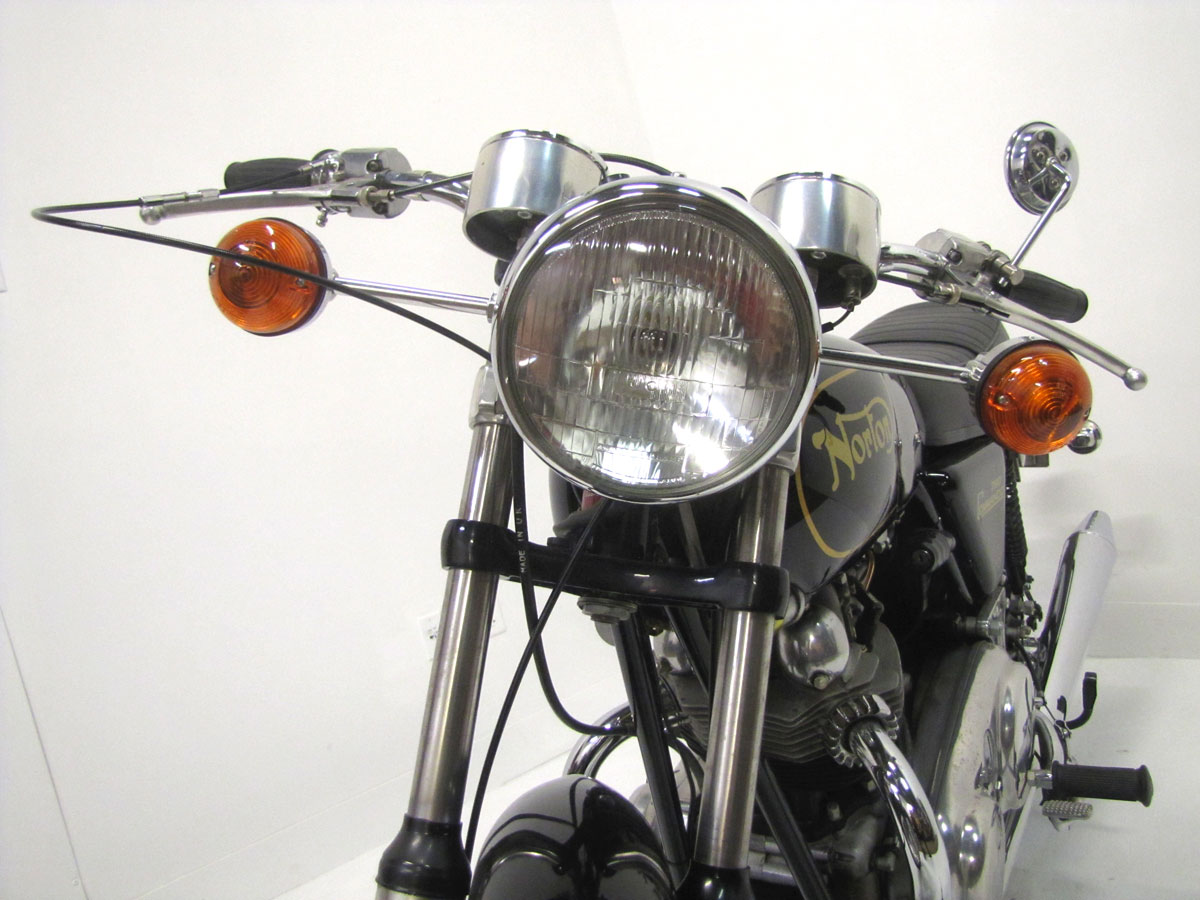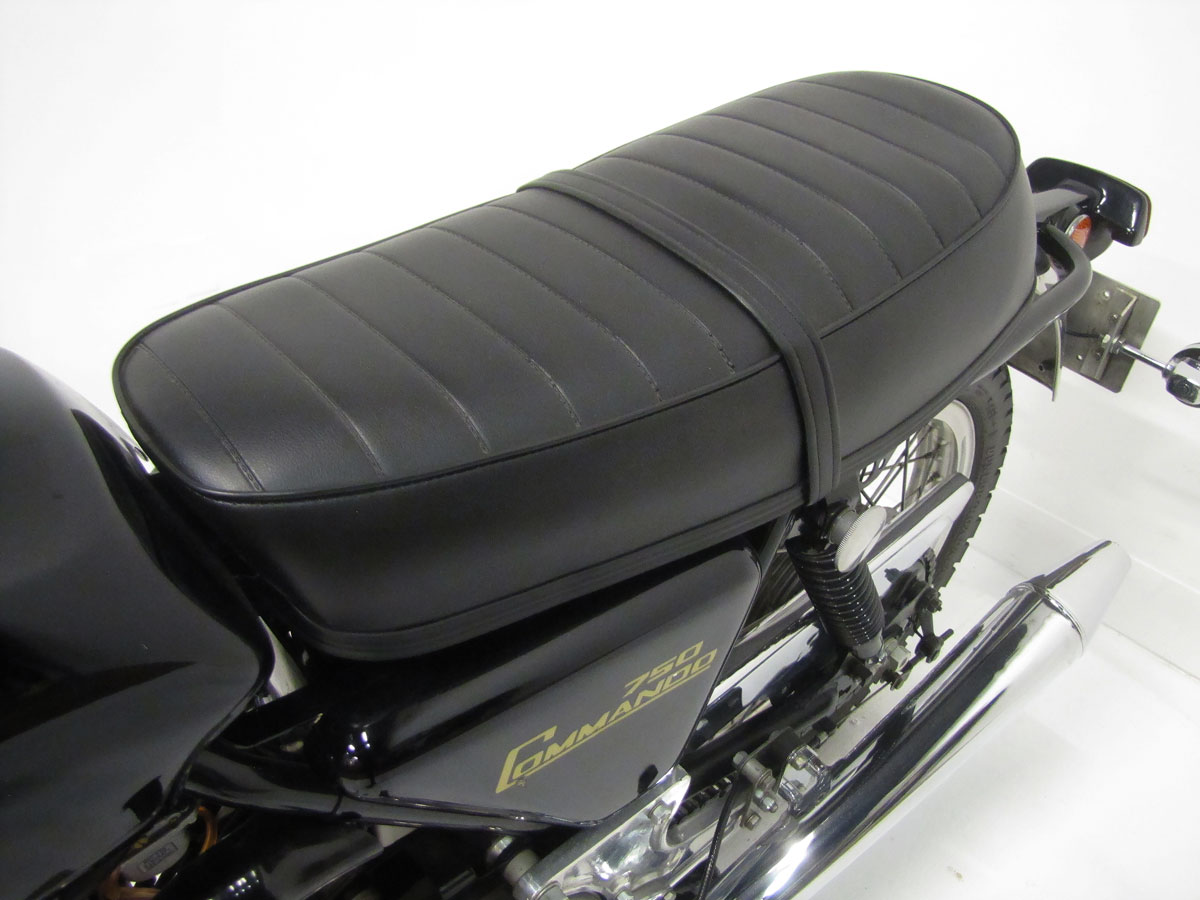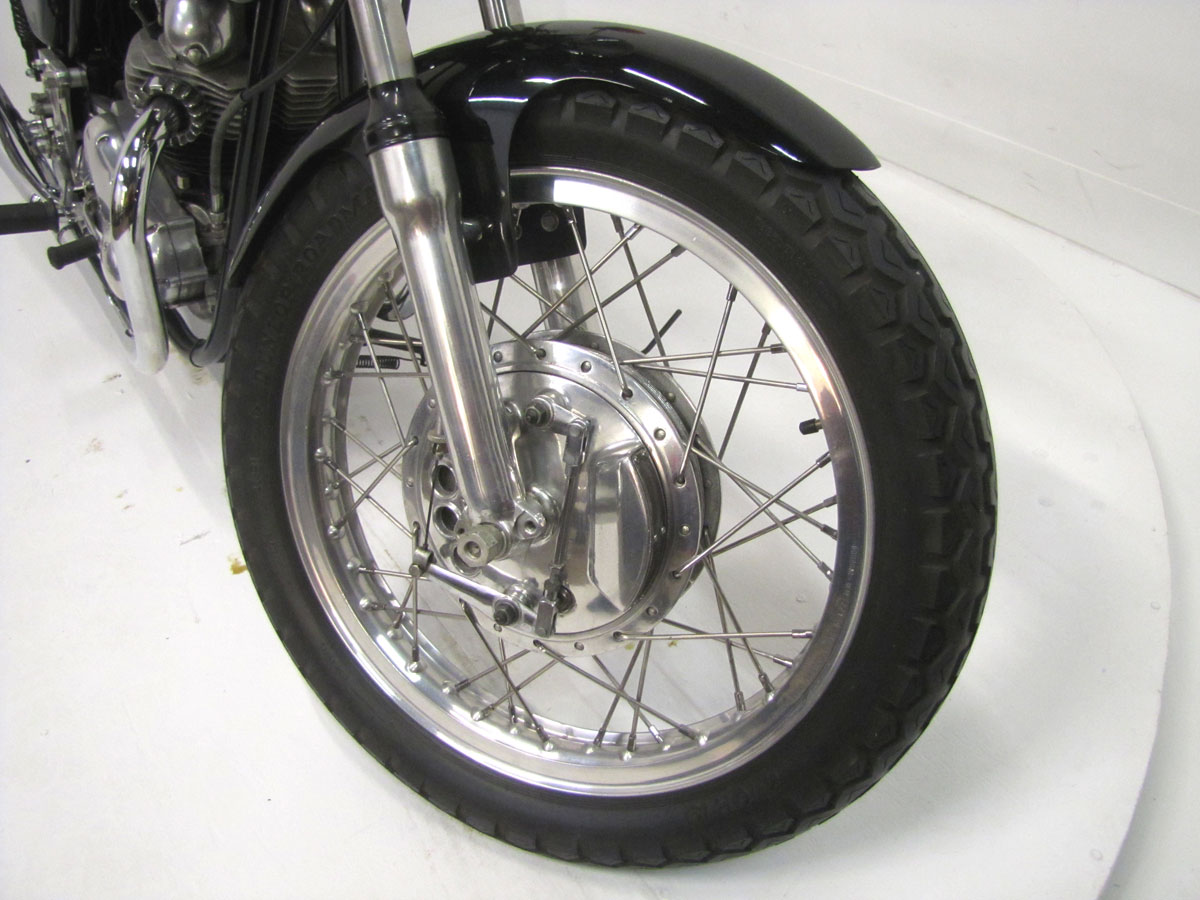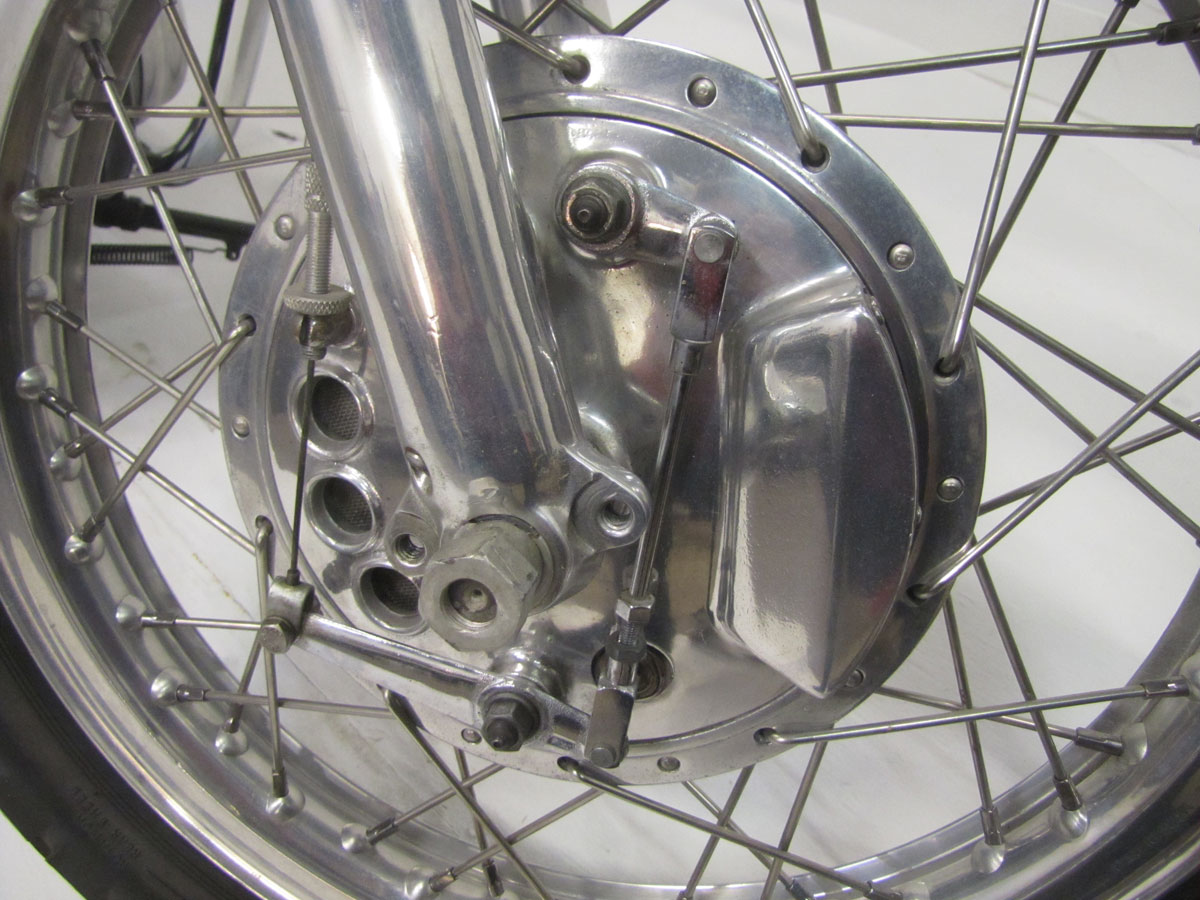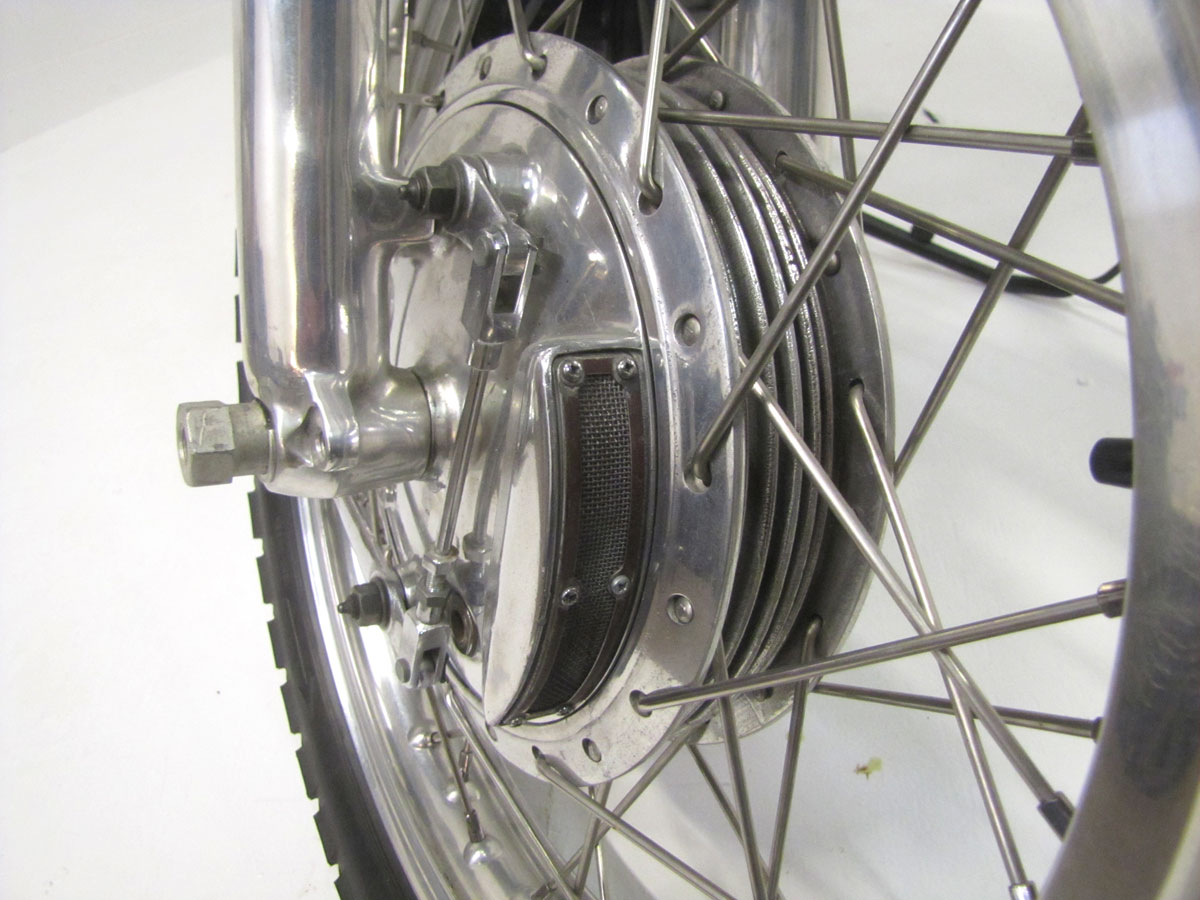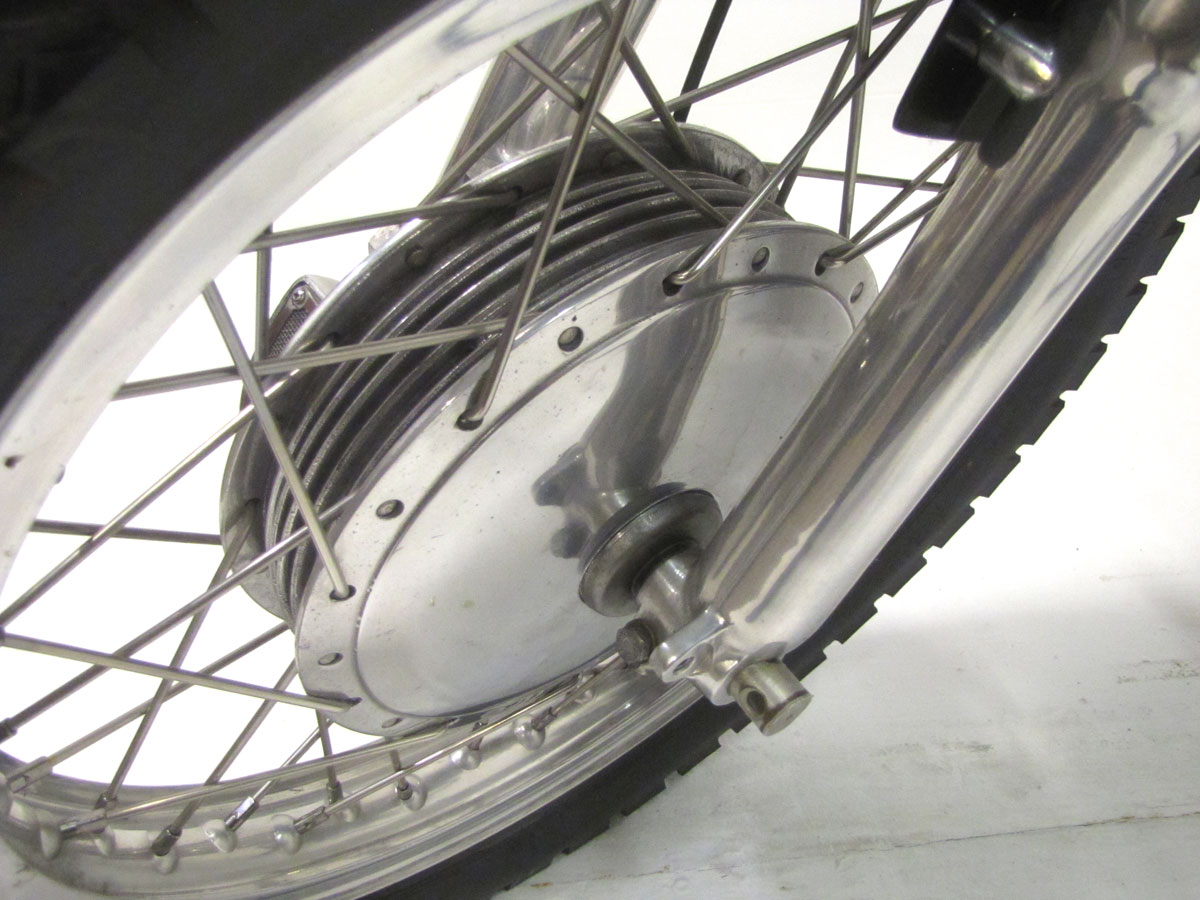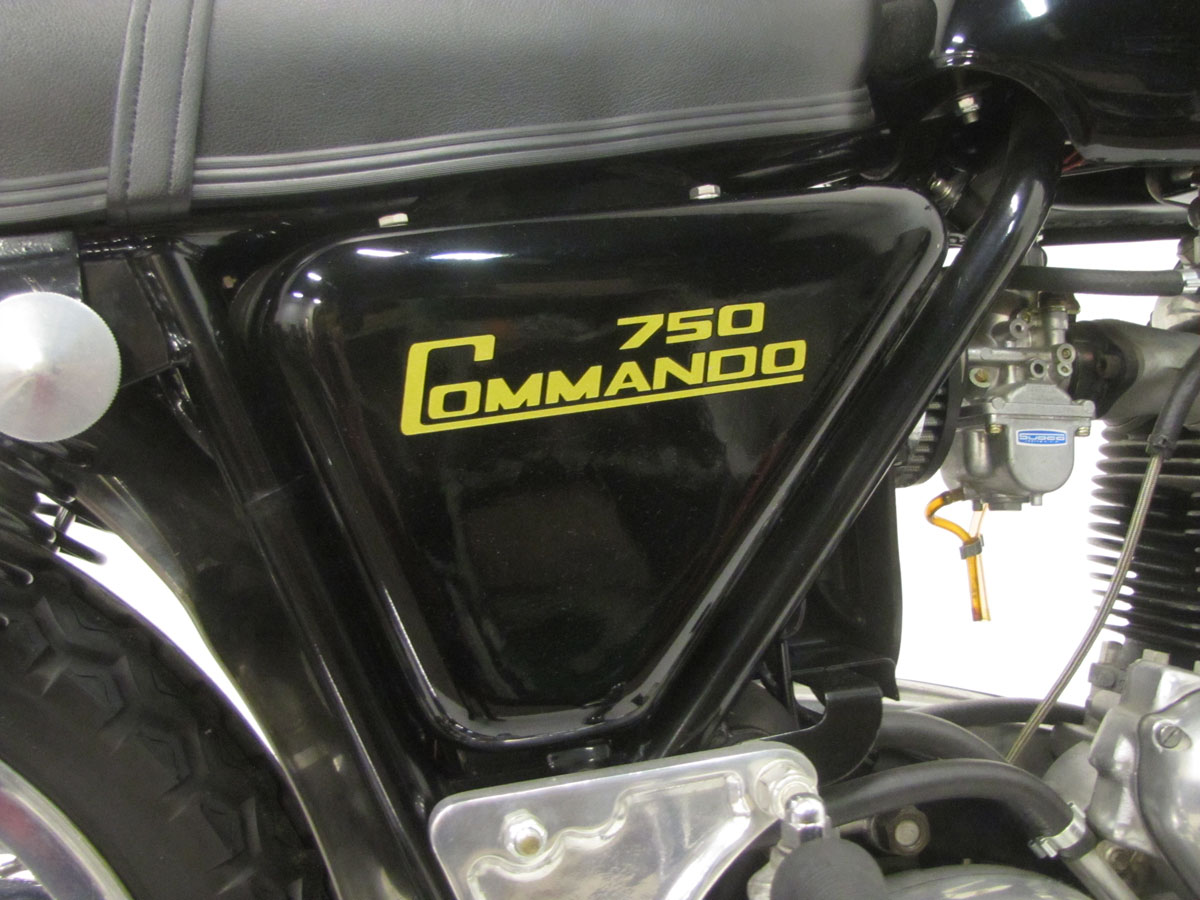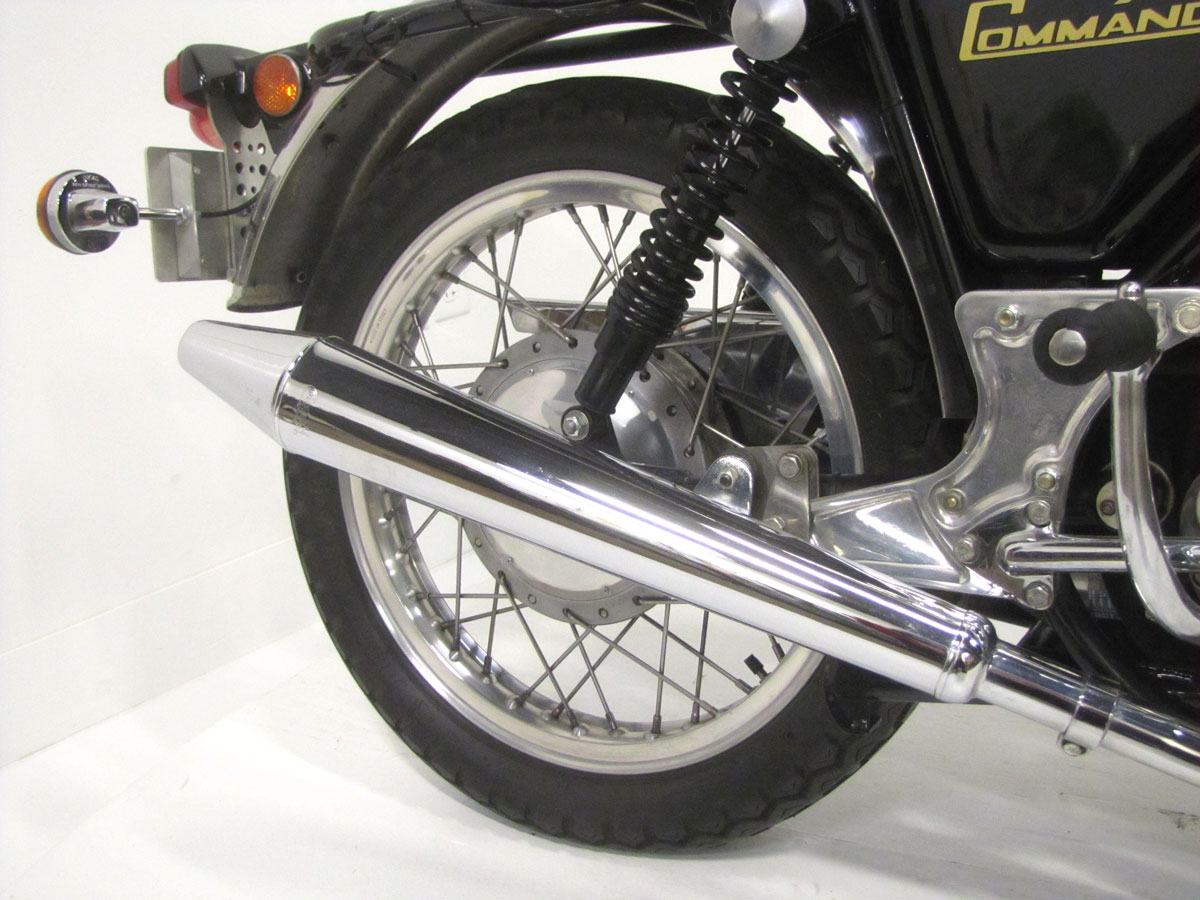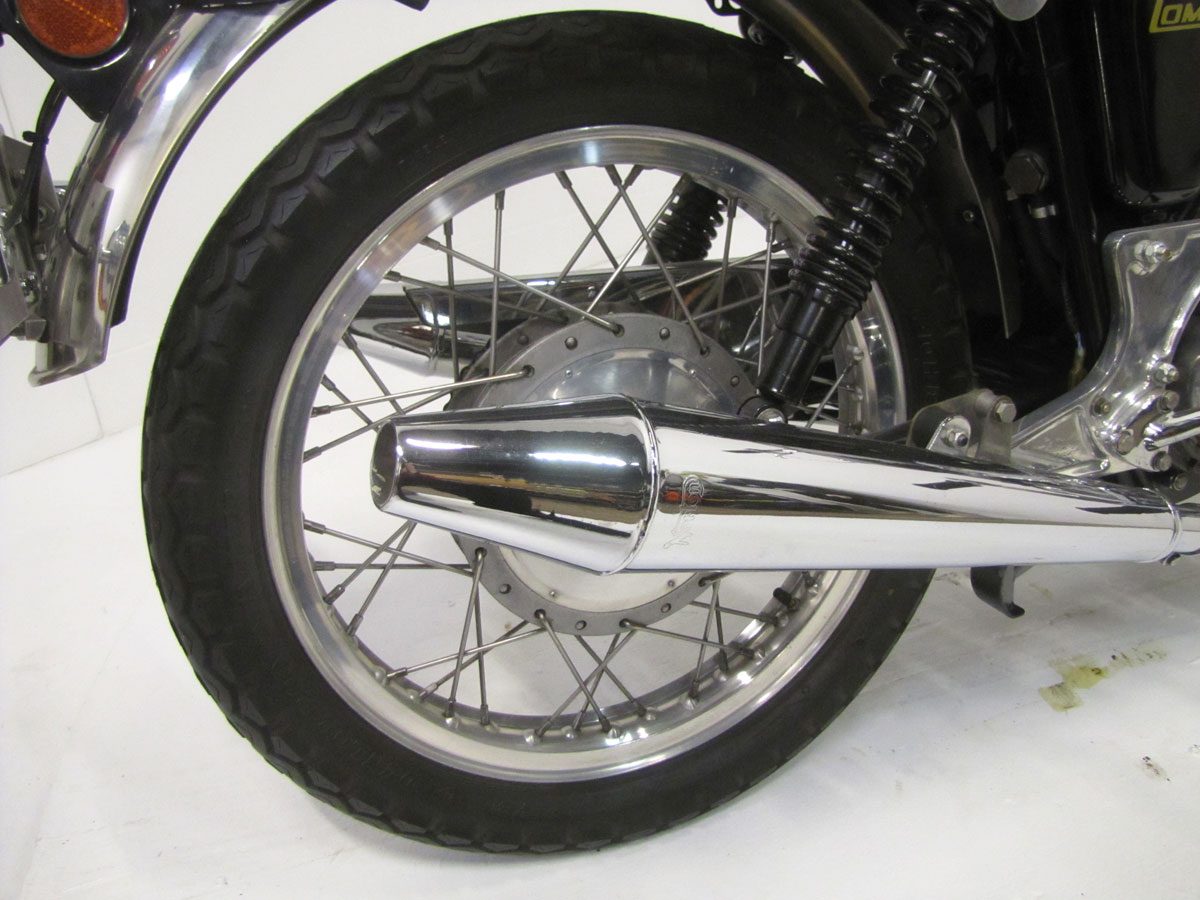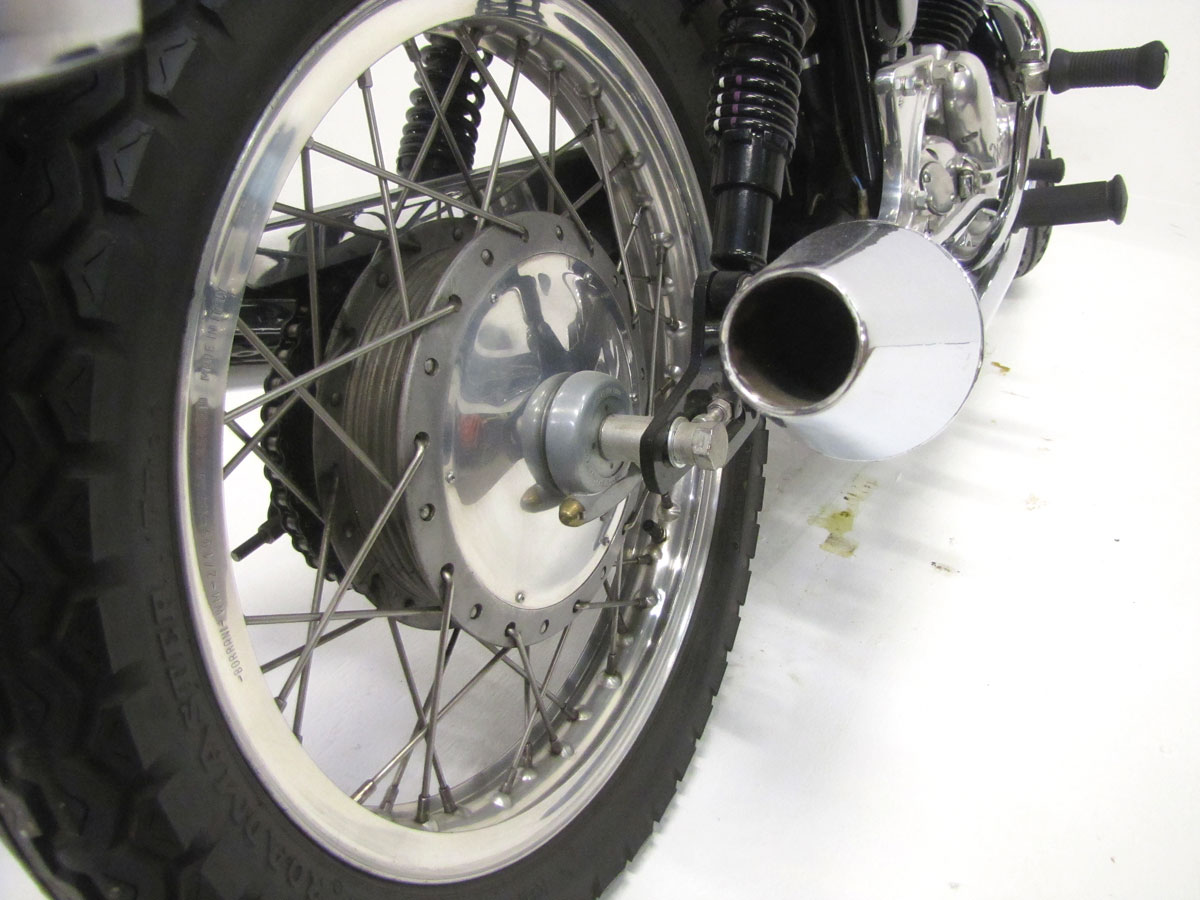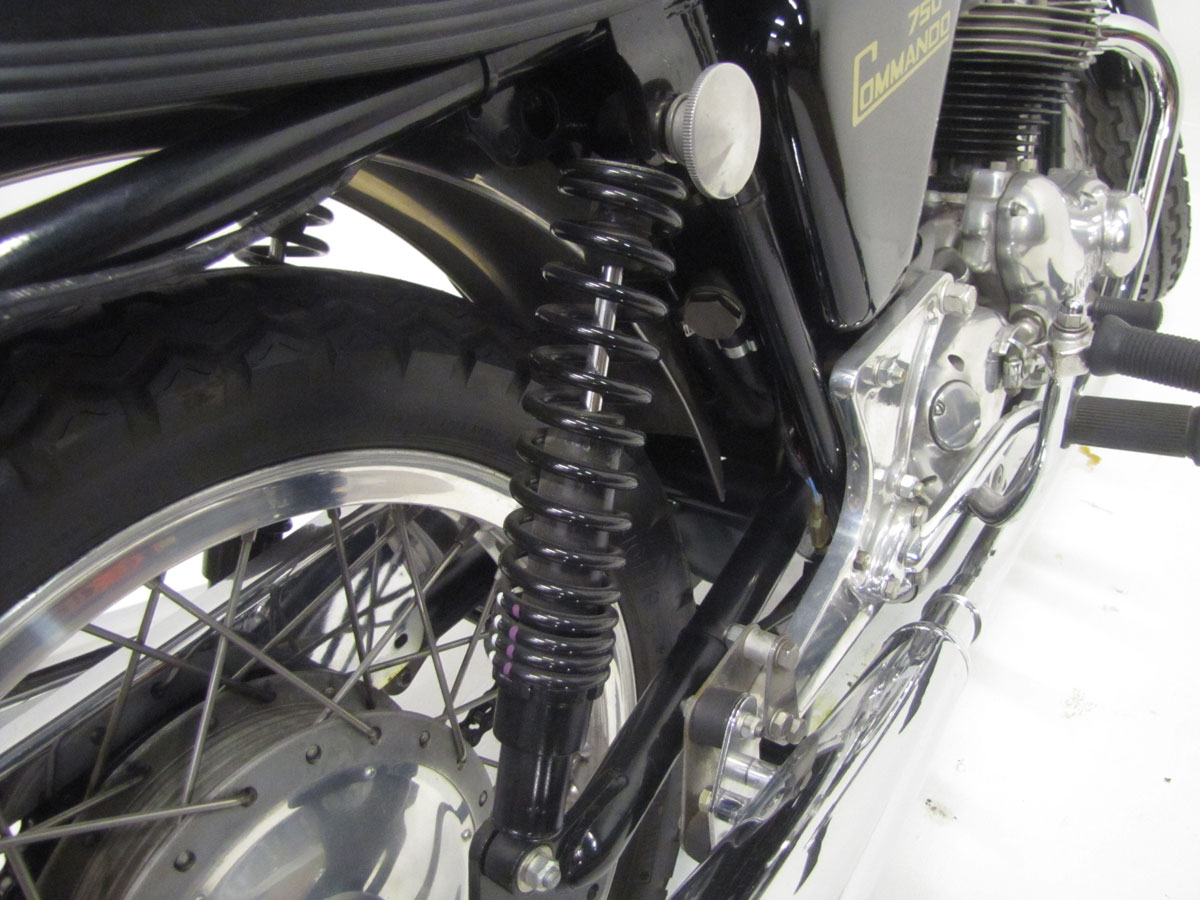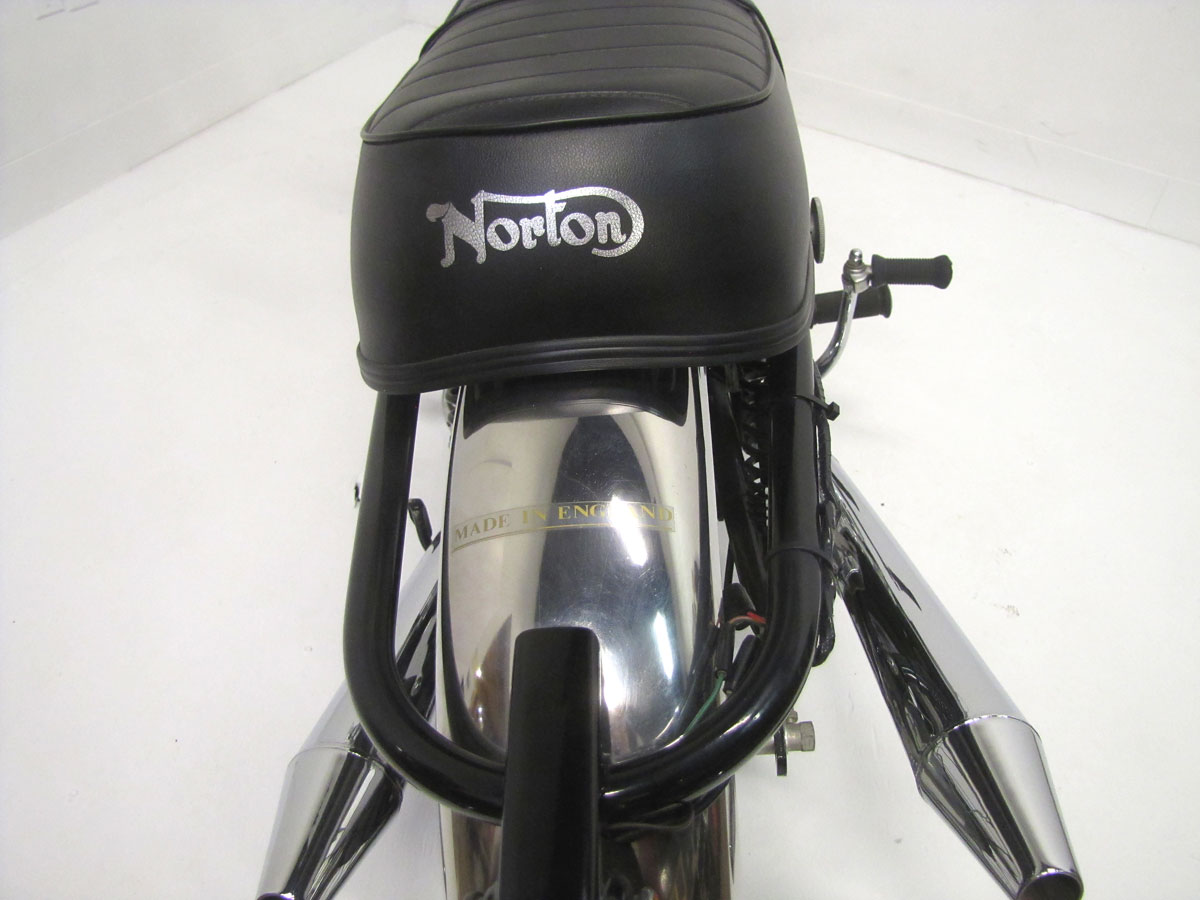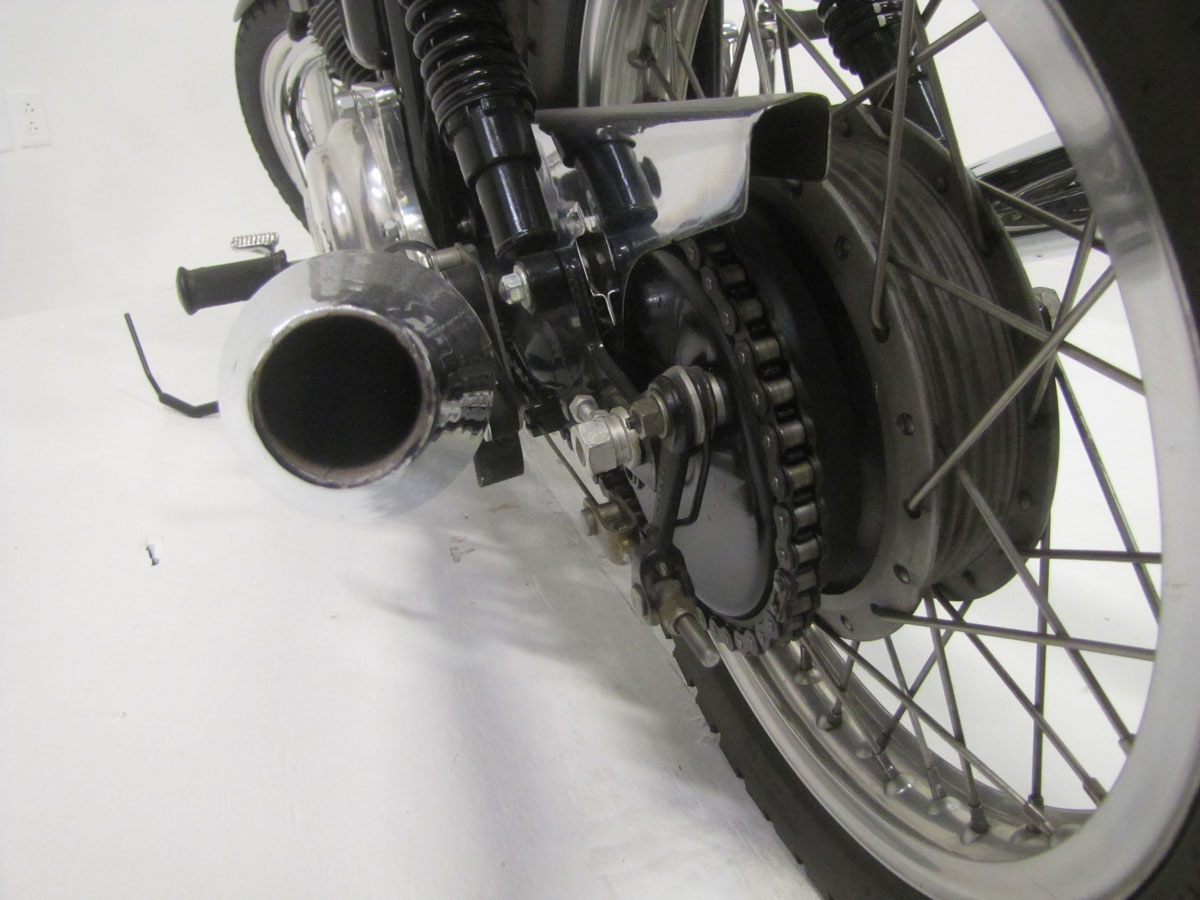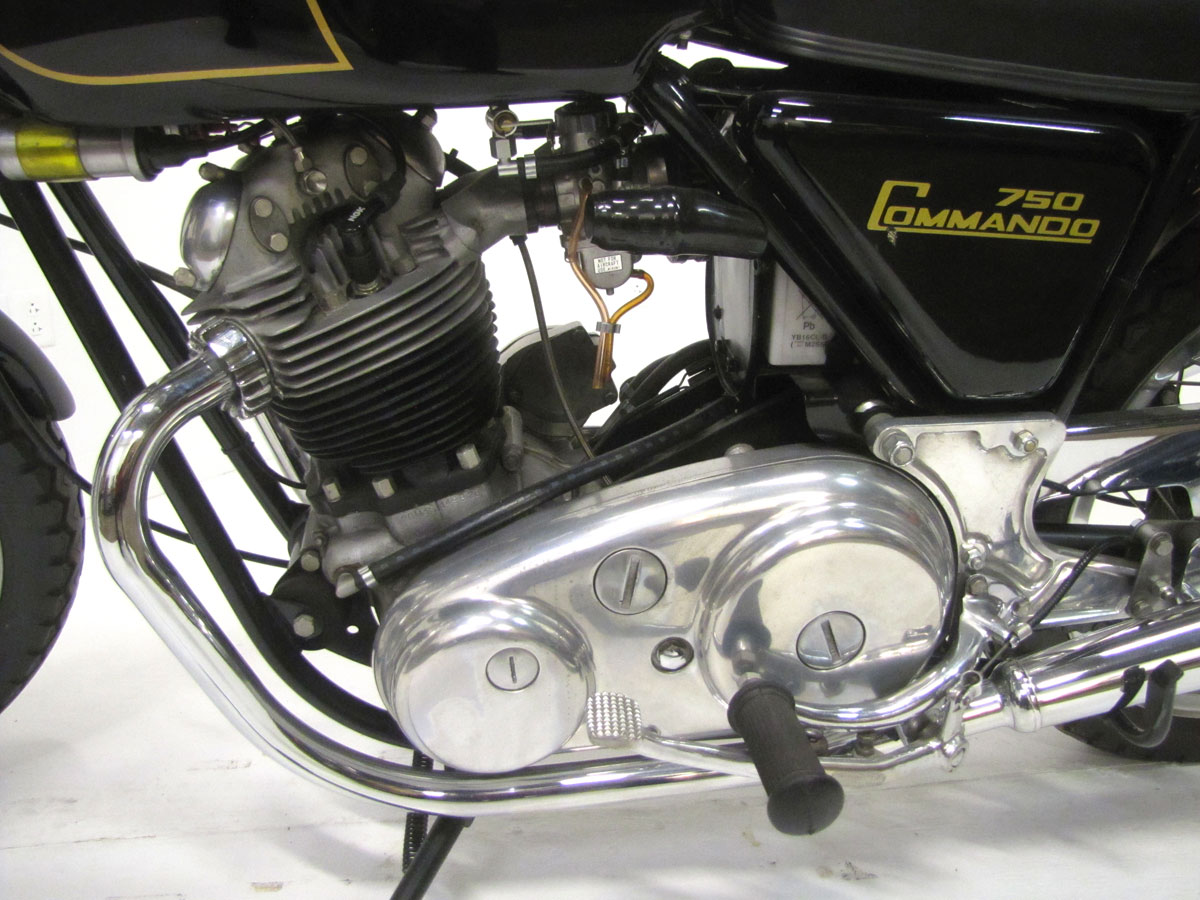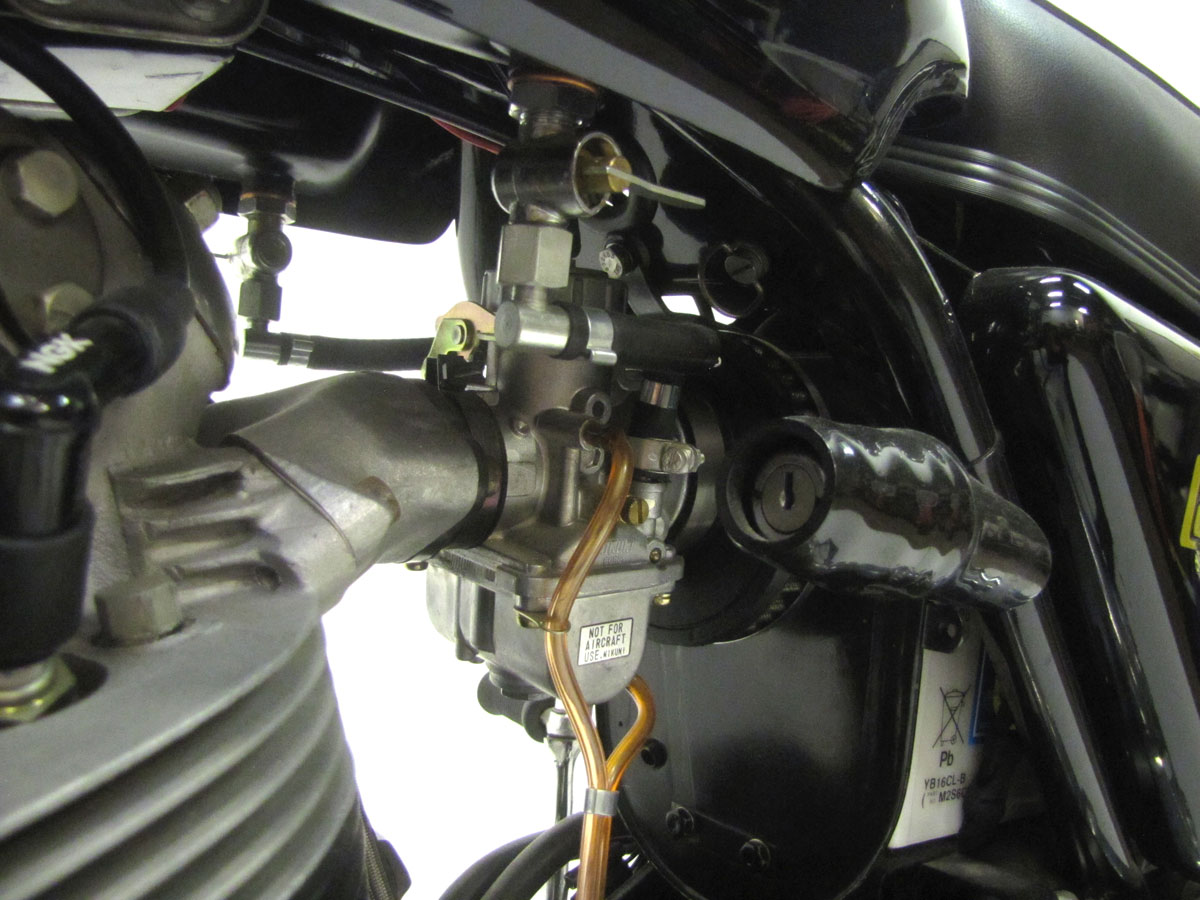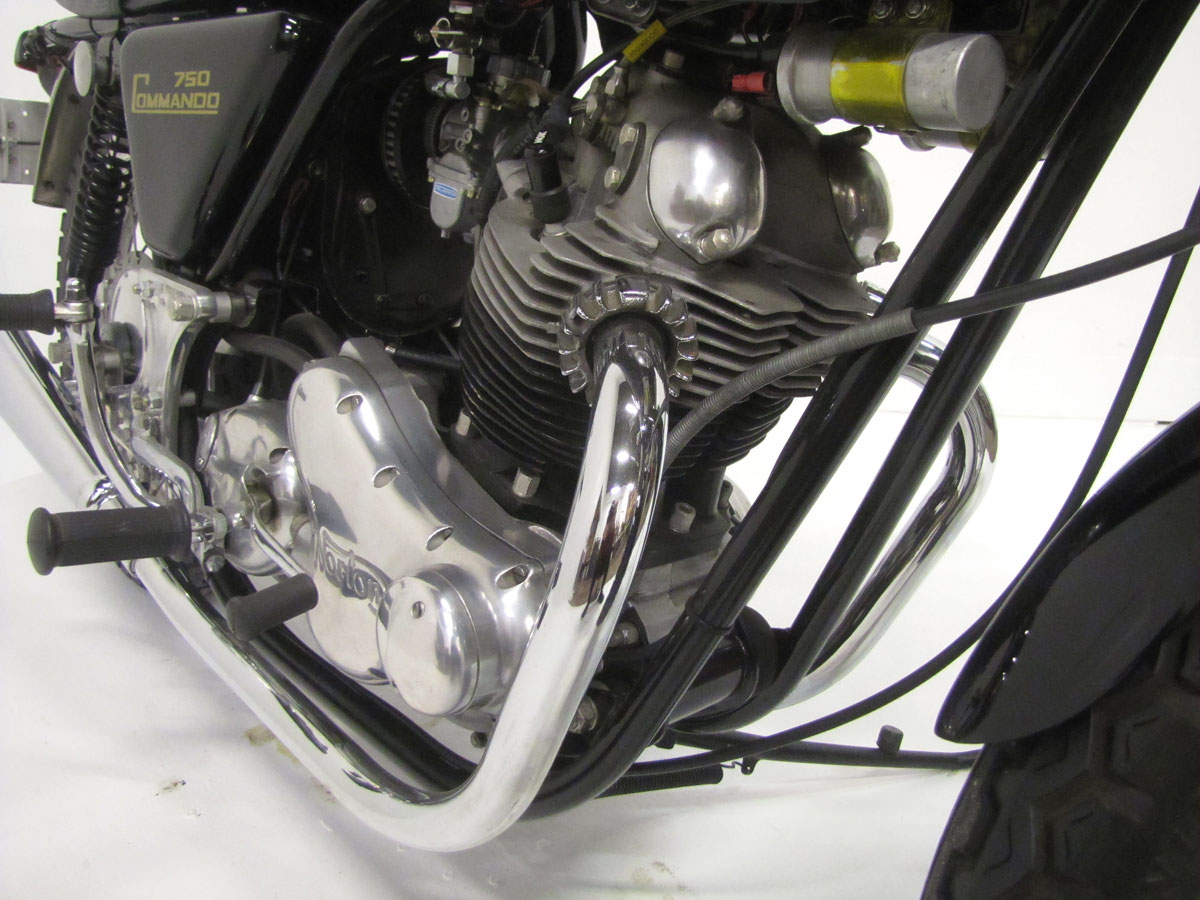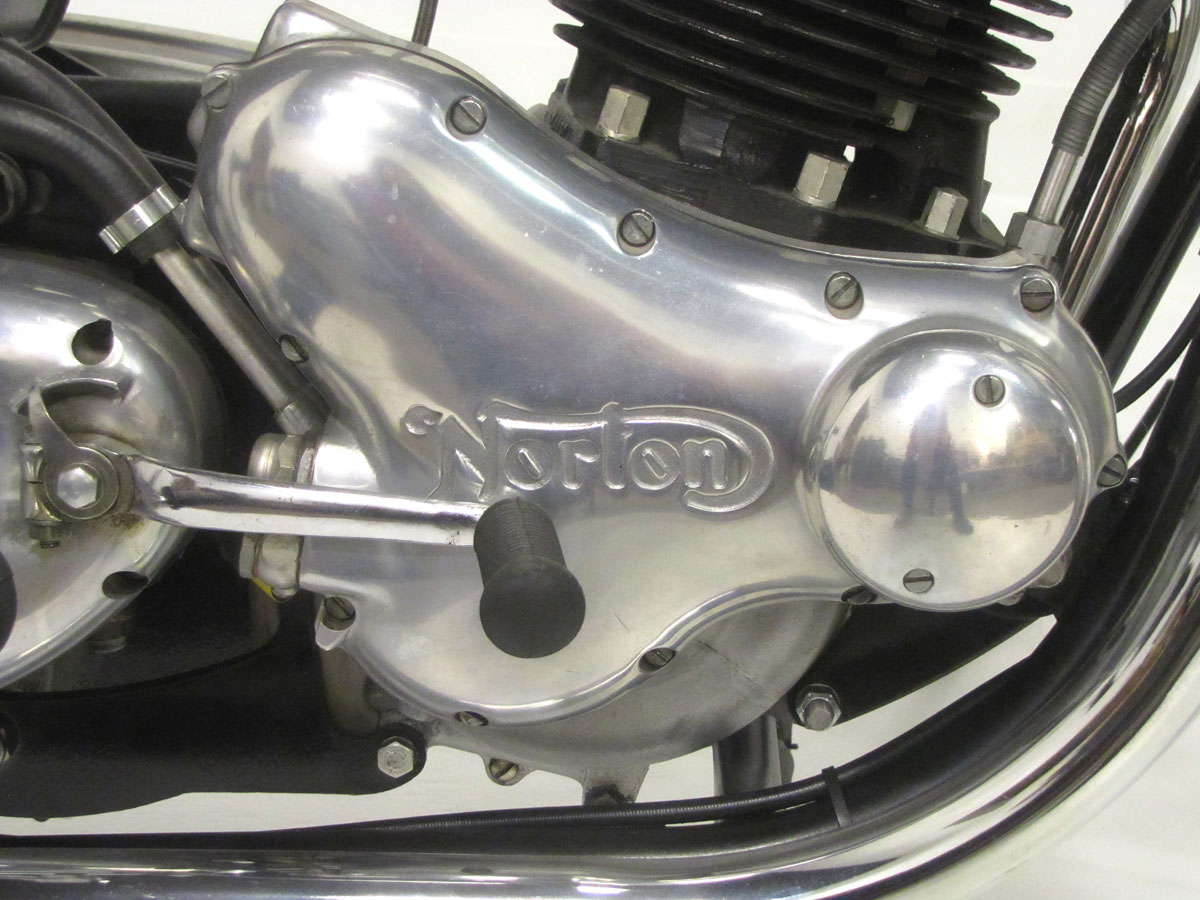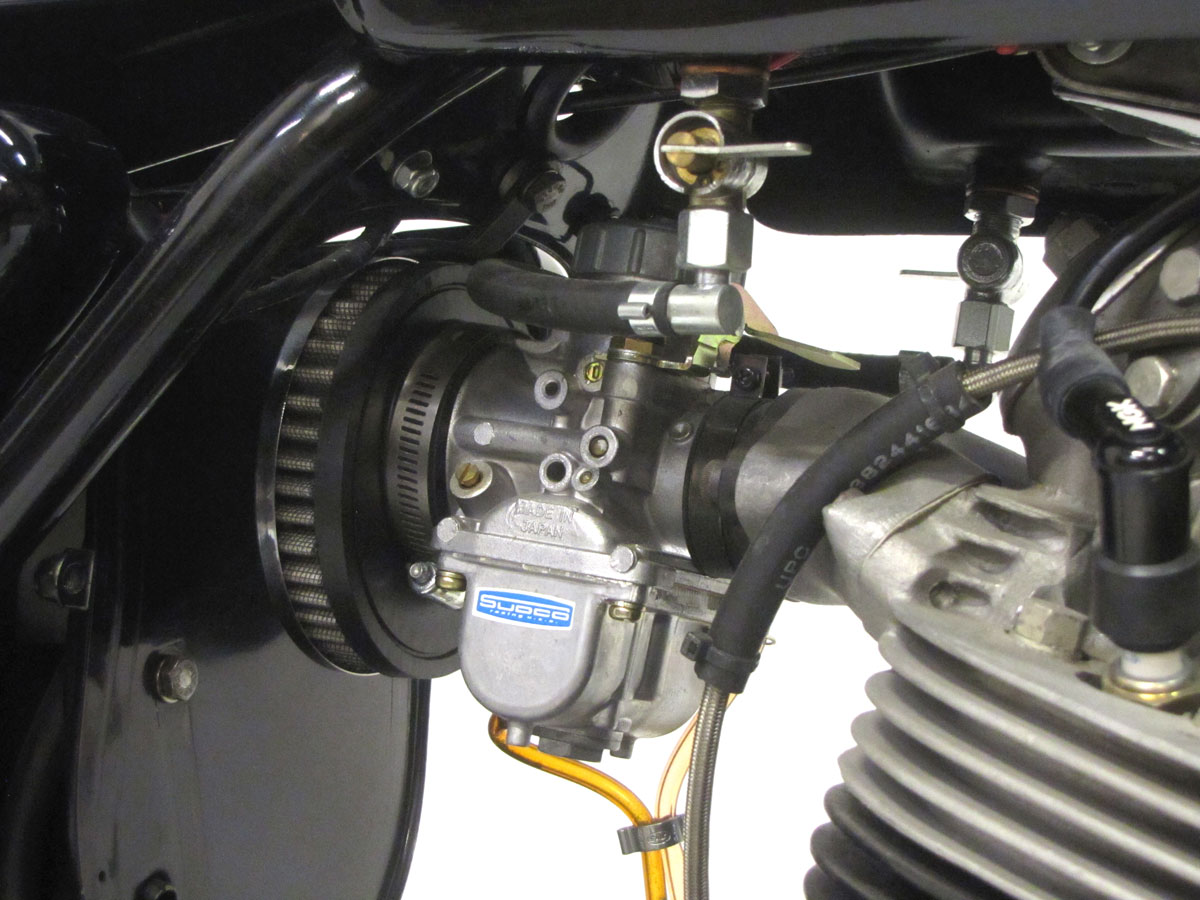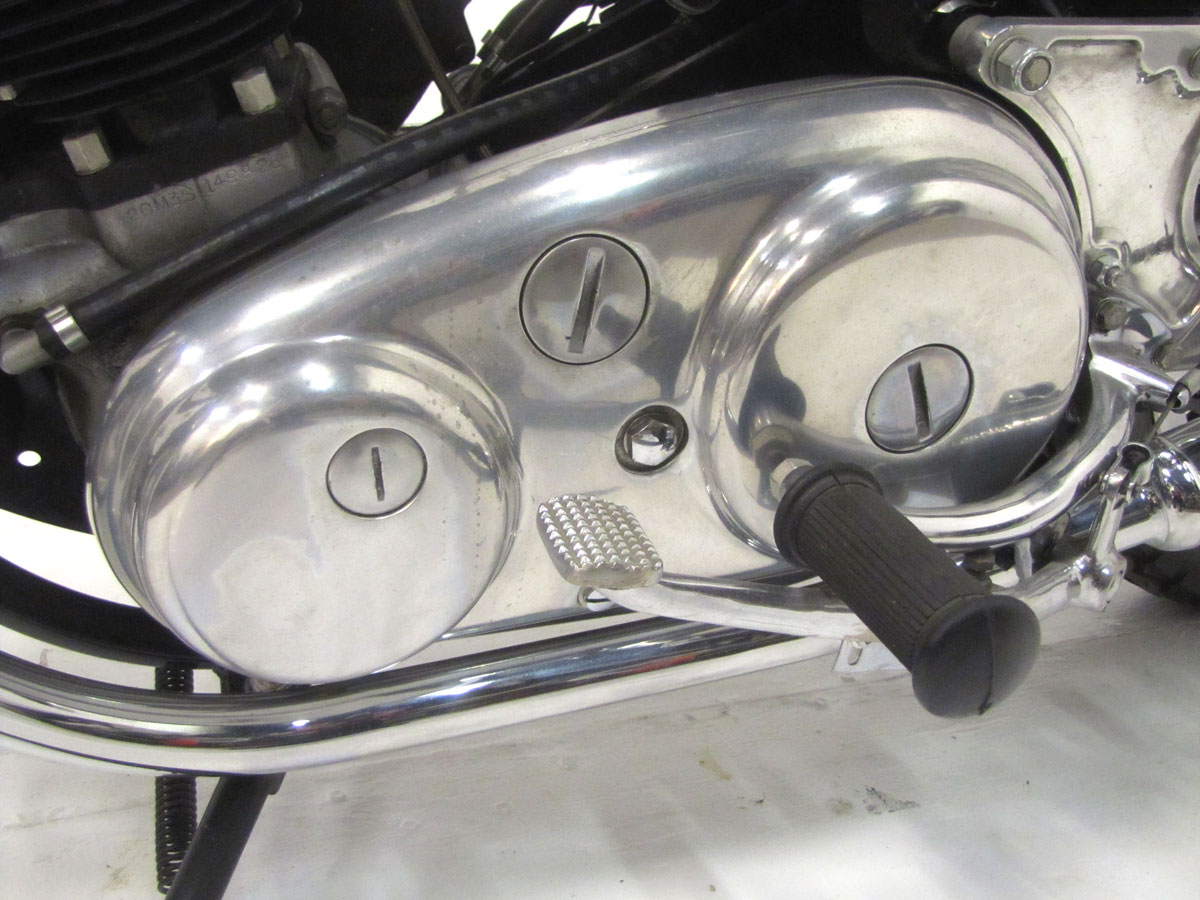1971 Norton Commando Roadster
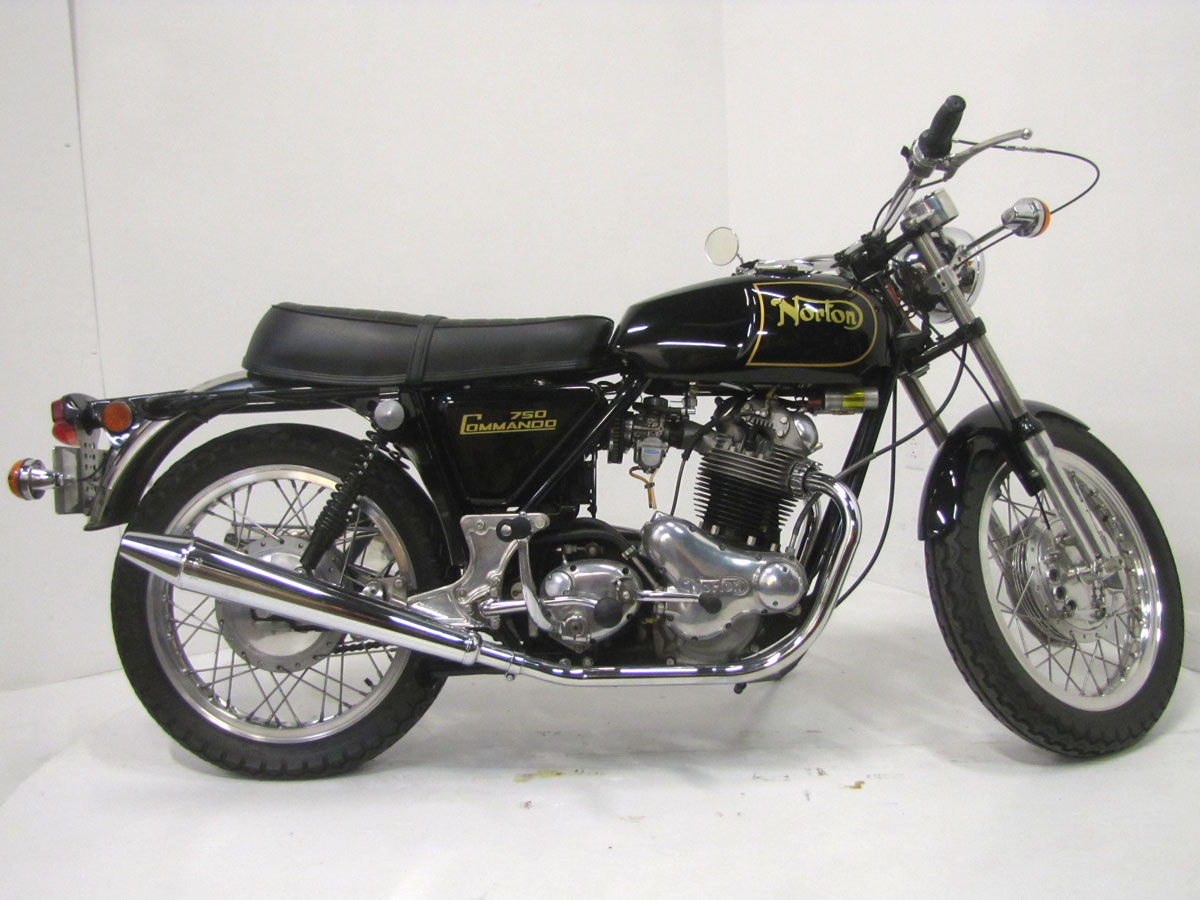 Designed around the best pieces developed for the Manx Norton production racer made through 1962, and the Norton Atlas, with new concepts like Isolastic driveline mounting, the Norton Commando excelled in every way.
Designed around the best pieces developed for the Manx Norton production racer made through 1962, and the Norton Atlas, with new concepts like Isolastic driveline mounting, the Norton Commando excelled in every way.
Many special versions of the Commando were made between 1968 and the hiatus in production for all Nortons in the early 1990’s. At the beginning, 1968, the Norton Commando “Fastback” hit the streets with little fanfare; the dealer network in America was thin, but you may remember the spicy magazine ads. Though something like a “cafe racer,” the look was not well accepted in the important American market. Norton quickly retooled with a trendy “scrambler” high pipe version, and then eventually the Roadster which they gave the very conventional look of our subject bike.
Initially at 100ccs stronger than offerings from Triumph and BSA, until the Trident and Rocket III arrived, the Commandos fared well even against the Harley Sportster, Kawasaki H1 and Honda CB750. In 1972 the “Combat” version hit the scene offering higher output, but some mechanical problems. An electric starter was added to the 850 for 1975. According to contemporary magazine tests, the stock Commando excelled in drag races. On a twisty road or a race track, the Norton left about everything behind; the Manx derived frame and 19 inch wheels shod with Dunlop’s famed K81’s made it handle. Disk brakes came in 1972. Nicknamed “Yellow Peril,” the Commando Production Racer was the most high performance model.
It was either not a well known science or too expensive to achieve, so engine balance was a problem on big twins of the era. A Norton engineer Bernard Hooper designed the Isolastic system which mounted engine, transmission and swingarm in a separate subframe on rubber mounts. The drive line still shook just as a Harley’s does today, but similarly the rider is isolated from it. Today many manufacturers have engineered in balance shafts, smoothing engine operation.
It’s also interesting to note just how universal and tough the Commando motor is. The Norton fared well on road race courses around the world, including the Isle of Man. And although never meant to run nitromethane blends or to be drag raced in anger, John Gregory and Tom “T.C.” Christenson built HOGSLAYER*, a world championship winning twin-Commando engined top fuel drag bike now displayed in the National Motorcycle Museum in Birmingham, England.
A British contemporary of Hendee, Hedstrom, Harley and the Davidsons, James Landsdown Norton began assembling motorcycles with clip-on engines in 1902. The Norton Big Four hit the streets in 1908 and Norton himself rode in the 1908, 1909 and 1910 Isle of Man TT races, then run on the “short course.” Rem Fowler won the very first TT riding a Peugeot-powered Norton. James “Pa” Norton died in 1925 at the age of 56 and it is amazing the company thrived into the 1960’s before closing its doors in the 1990’s, largely due to weak management and strong Asian competition. Much like Indian has been revived a couple of times, new ownership of the Norton brand commenced limited production in 2012. But financial problems seem to plague these revived old brands and “new” Norton production is an off and on proposition. In late 2022 a V-4 Norton prototype was shown and announced as in development.
This 1971 Norton Commando Roadster is lightly customized with trimmer front fender, a single Mikuni carburetor and flanged alloy rims and is part of the Jill and John Parham Collection. Before the National Motorcycle Museum closes permanently September 4, we hope you’ll stop by and check it out along with a Norton 500 single racer from the pre-World War II era.
Specifications:
-
- Engine: 745cc Air-cooled Parallel Twin
- Type: Overhead Valves / Two Valves per Cylinder
- Bore and stroke: 73mm x 89mm
- Compression ratio: 8.9:1
- Carburetion: Stock Twin Amal Concentrics (Single Mikuni)
- Horsepower: 56 hp @ 6,500rpm (R model; 60hp @ 6,800 rpm)
- Primary: Chain-driven
- Transmission: 4-speed
- Electrics: 12 volt, Coil and Points
- Frame: Twin Down Tube Cradle, Isolastic Engine Mounts
- Front Suspension: Telescopic Fork
- Rear suspension: Twin Shock Absorbers
- Front brake: 8 inch, Twin-leading-shoe Drum
- Rear brake: 7 inch, Single-leading-shoe Drum
- Front tire: 3.60 x 19 inch, K81, Stock
- Rear tire: 4.10 x 19 inch, K81, Stock
- Wheelbase: 56.75 inches
- Weight: 420
- Top speed: 122 mph

